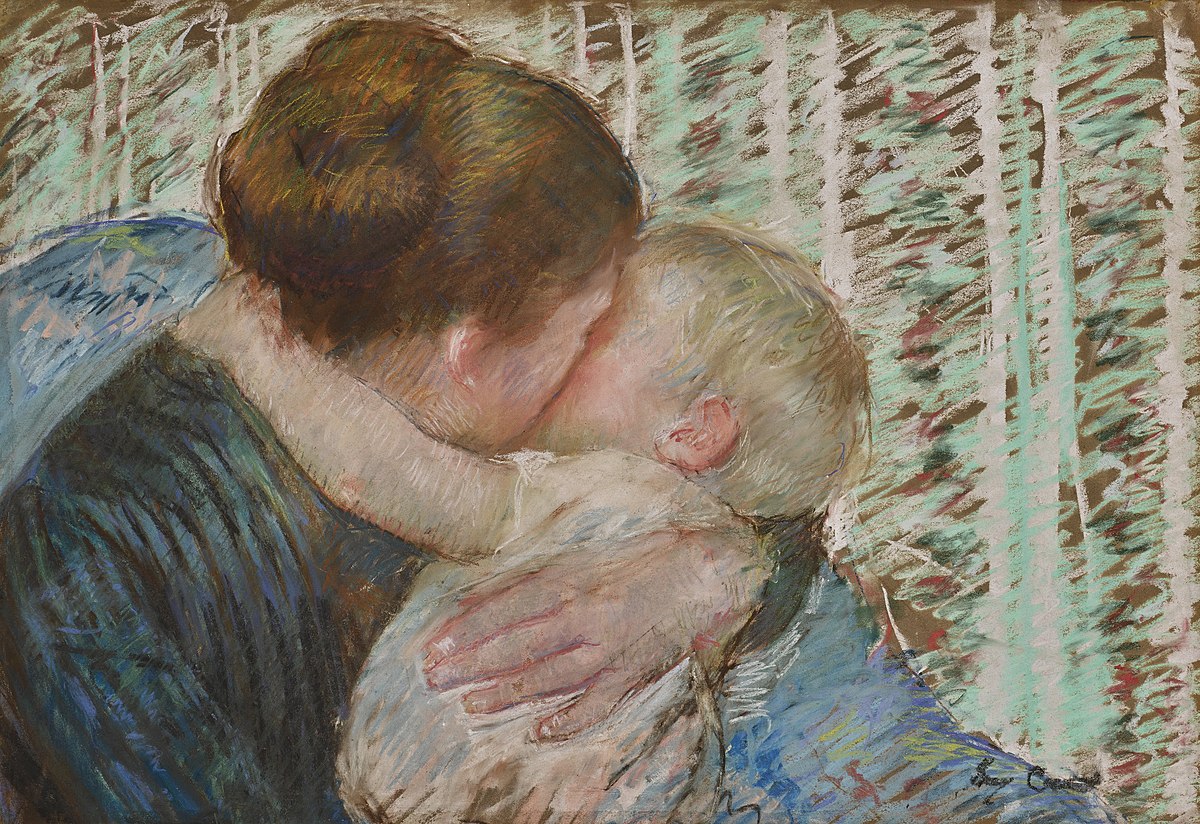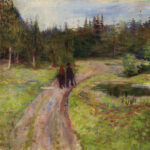“Of his own will he brought us forth by the word of truth, that we should be a kind of firstfruits of his creatures.” – James 1:18
In Natality, Jennifer Banks—senior executive editor at Yale University Press— embarks on a journey to understand natality and to propose “a philosophy towards birth.” In Banks’ thought, birth is “a singular event, a succinct and contained vignette, and unsurprisingly, it has been coded female: material, contradictory, messy, subconscious, sacrificial, sentimental, dangerous, powerful, weak, normative, subversive, and always lacking a clear definition.”
Given her unwillingness to provide a clear definition of birth, it makes sense that she turns to seven historical figures to present her philosophy: Hannah Arendt, Friedrich Nietzsche, Mary Wollstonecraft, Mary Shelley, Sojourner Truth, Adrienne Rich, and Toni Morrison. Banks focuses primarily on the lives of these characters, extracting from their experiences to piece together her philosophy.
Banks explores the power contained within birth by examining humanity’s dependance on birth. Through her characters she asks: what if humanity took the power of birth into their own hands? What would it mean to disrupt a patriarchal creative lineage? How can a woman be the genius of her own body, birthing a new relationship to the universe? What Banks does not address are the fundamental philosophical questions distinctly pertinent to both human birth and the creative impulse: is it a fundamentally good thing when human life is conceived? Should all creative ideas and dreams be acted upon? These questions are perhaps too thorny for her purposes.
What Banks does not find thorny (but perhaps should) are the lives of her characters as bastions of a proper natal philosophy. Though intended to inspire the reader in thinking about natality, they are more tragic and fraught than the too-simple use of them Banks makes. Yet if Banks often fails to exercise discernment in her judgment of their natal philosophies and practices, readers can draw from these examples a philosophy of birth that takes the rupture of new life more seriously.
Banks begins with Hannah Arendt—the famous twentieth century political philosopher—who fled Nazi Germany as a young woman. She entered into an affair with the German philosopher Martin Heidegger while she was his student and he a married man. Later in life she married Gunther Anders, but promptly divorced him shortly after meeting Heinrich Blucher, who also divorced his spouse to be with Arendt. Banks sees birth presented in Arendt’s political writings as “haphazard, unprecedented, and surprising,” traits which Arendt’s romantic life certainly exhibited.
Banks moves on to Friedrich Nietzsche, who suffered from various illness and was romantically unlucky, which Banks makes much of: the woman he loved ran away with the third member of an intellectual trio he was involved with. He famously went mad later in life. Banks romanticizes Nietzsche’s primally savage philosophy and gushes, “Imagine it, he challenged his readers: . . . a new spiritual tradition can grow up around life, creativity, sexuality, and procreation. He saw himself as the herald of his own newborn tradition and, later in years, he was its messiah.”
The novelist Mary Wollstonecraft was the daughter of an absent father and a perpetually ill mother. As an unmarried woman she was impregnated by a man who later abandoned her; she attempted suicide twice and later conceived by a different man. The two married and yet agreed that they still despised the institution of marriage. Banks writes much of Wollstonecraft’s mission to change how the sexes related to one another through “a passionate equality freed from any institutionalized imprimatur.” Wollstonecraft died giving birth to Mary Shelley.
Mary Shelley admired her mother. She met Percy Shelley—at the time a married man with one child and a pregnant wife—when she was only sixteen and conceived by him at the same age. Along with Lord Byron and Mary’s stepsister Claire, they established a supposed harem known in London as “the league of incest.” The writers wrote together, and Mary produced Frankenstein to explore the moral consequences of trying to create and control another life. Interestingly, Shelley portrays the flaws with this attitude toward new life, and her political and social views emphasized the importance of compassion, sympathy, and maternal virtues. Banks neglects this side of Shelley’s work and notes that four out of five of her children died at a young age, leading Banks to conclude that “she saw no peaceful future on her horizons.”
Sojourner Truth, a champion of abolition, survived the anguish of slavery in America, including sexual abuse at the hands of her master and probable sexual abuse from his wife. Banks notes that she remained connected to her children, but family was not necessarily at the forefront of her mission. She was an itinerate preacher, equally promoting the Christian message and the message of society’s equal responsibility for nurture and cultural renewal.
The twentieth century poet Adrienne Rich grew up in a demanding and dysfunctional home. Her father found pregnant women ugly and consequently forced his wife to remain inactive and hidden while Rich developed in her womb. Rich married, birthed three sons, and requested to sterilize herself at the conclusion of her third delivery. Banks describes how much Rich loved her sons and even motherhood. Yet Rich admitted she apparently was not born to be a mother, and she sought refuge from her children in writing poetry, “where she could live as no one’s mother.” Paralyzed by the duties around her, she retreated from her household and rented her own apartment for a time so that she could have space. Banks heavily pads this transition; she describes Rich’s sons as “growing into young men,” but Banks neglects to clarify that Rich’s youngest son was only eleven. Her husband sank into depression during this period and committed suicide. Rich championed radical feminism and eventually came out as lesbian.
The American novelist Toni Morrison grew up with a loving family and was well educated. She married and birthed two sons. When the family went on a trip to Europe, however, “she returned home a single woman. Her marriage was over, and she would never marry again.” It is unknown what happened on that trip. She wrote one novel where the main character—a slave woman—murders her own child in order to save her from bad circumstances. Banks reads such passages as evidence that Morrison promoted the notion that non-existence is better than a life of suffering—a common feminist talking point and one difficult to square with a commitment to the goods of natality.
It is unfair to discount an entire philosophy simply because a philosopher made poor life decisions. If the biographies of these characters were simply context to Banks’ philosophical method, it would be reasonable to place their personal faults at the back of one’s mind. However, their lives are the centerpiece of the book, the locus of her philosophy of natality. Concrete philosophical claims are on the outskirts. The flow of the book consists of large swaths of biography interspersed with the words, “birth” and “natality” planted either before or after a string of adjectives. “Birth” and “natality” I could only interpret as meaning “coming into existence”—a definition that contains all things save God himself. Banks confesses that she intentionally does not provide a succinct definition. She encourages her readers to spend their days uncovering natality for themselves—a call to action I found supremely unhelpful, considering the book claims to be about the topic.
Natality thus takes an odd approach to its titular subject. Begging many of the core questions around its topic, Natality refuses to reassess the kind of modern, progressive assumptions that Tara Isabella Burton traces in Self-Made: Creating Our Identities from Da Vinci to the Kardashians. Banks writes from implicit individualist, liberal, and feminist presuppositions. She considers birth from within these categories rather than allowing the phenomenon of birth to trouble or reshape their assumptions.
Hence, Banks maintains that birth itself is a wonderful thing, but she criticizes ghastly pro-natal groups who “fetishize” birth by caring about the unborn more than the born. Through this, Banks hints that the personhood of the unborn interferes with modern self-realization, and therefore she rejects any claim to a material, ontological sense of natality as the irruption of a new life. For Banks, the glory of natality is not that it is a passage into the world for something or someone else, but that birth is a tool for our own self-creation, whether that be through materializing other people in our bodies or projecting our ideas and actions onto the world.
If the sum total of life is making ourselves through existential struggle, then philosophy is best articulated through the lives of existentially struggling people rather than precisely defining and explaining nature. Banks writes that birth breaks down the “dualisms” of reality—what she means is that birth is the vehicle for individual realization and societal progress. She writes that her characters reject anti-natalism but were not pro-natalists—what she means is that a proper natality is not pro-life. But Banks never comes out and states what she means, preferring a bevy of poetic diversions and biographical minutiae. The arbitrary details are the whole substance, and Banks swims in the details.
What philosophy do Bank’s details tell? Life is very hard, and it is not necessarily good. We must fend for ourselves, and natality is both a weapon to cut out the rot of humanity and the fertile soil to plant and actualize ourselves. To the modern reader, Banks’ characters may inspire; but to the Christian or to any reader open to the idea that birth might impose responsibilities upon us, these biographies are likely to serve as a cautionary warning rather than an invitation to imitation.
The book seems to look ahead to a day when something will be born within us and from us to discover a solution to the evil people and institutions that molder in our world. Natality—the coming into being of something—is the only hope we can hold onto, for ourselves and for the future. In the continual cycle of birth, life, and death, we are progressing. A solution may never come, yet again it just might come, Banks concludes.
However, something—Someone—did come. He was even born of woman. Not only was He himself born, but He promises to give us new birth by His power, through water and the Spirit. We have a mother in His Church. The world will be reborn too, all things made new, and every tear wiped from our eyes. Banks mentions but does not highlight Him, and it is a shame because His birth might inspire just the philosophy she seeks.
Image credit: “Mother and Child (the Goodnight Hug)” by Mary Cassatt via Wikimedia Commons





1 comment
Chris
Outstanding.
Comments are closed.